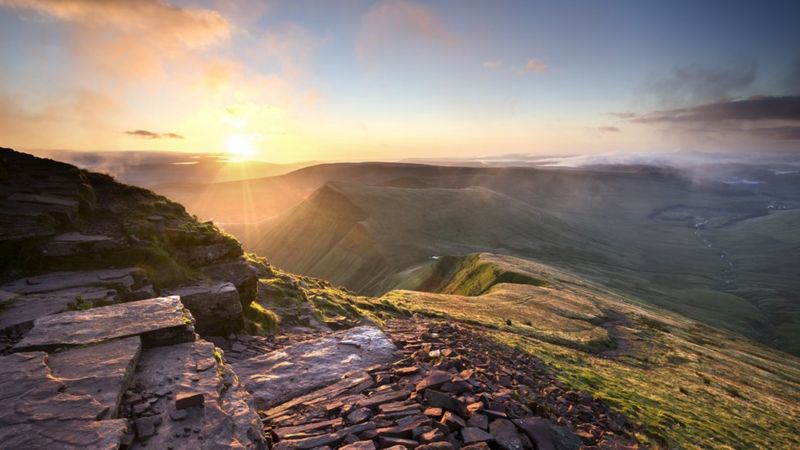In an exciting development for nature lovers and outdoor enthusiasts, Wales is considering the creation of its fourth national park, which would be the first new addition since 1957. This proposed park in the north-east of Wales builds upon the legacy of the country’s existing natural treasures: Eryri (Snowdonia), the Pembrokeshire Coast, and Bannau Brycheiniog (Brecon Beacons).
This initiative, a part of Welsh Labour’s manifesto, has kickstarted an official review and consultation process led by Natural Resources Wales (NRW). The Welsh government is backing this endeavour with significant funding, committing £700,000 a year from 2022 to 2025.
The focus of this proposed national park is around the Clwydian Range and Dee Valley Area of Outstanding Natural Beauty (AONB). This area is renowned for its heather-clad peaks, Iron Age hillforts, and the picturesque Dee Valley, which features medieval castles and the Pontcysyllte aqueduct, a world heritage site. NRW’s draft map for the new park includes these areas but extends further into north Powys and across to Gwynedd, bordering Eryri National Park.

The distinction between an AONB and a national park lies in the level of protection and management. While an AONB focuses on conserving natural beauty, a national park also encompasses the conservation of wildlife and cultural heritage, offering public enjoyment opportunities. The establishment of a national park authority would oversee these responsibilities, possibly taking control of all planning applications in the park.
This proposal raises questions about defining ‘natural beauty’, with NRW’s assessments aiming to demonstrate that the area is significant on a national level. The evaluation considers not just the visual aspect but also the scenic quality, wildness, tranquillity, and historic and cultural associations of the area.
The financial aspect is also a key consideration. The existing three national parks in Wales receive substantial funding from the Welsh government. The creation of a new park raises concerns about potential funding diversion from the existing parks. However, national parks also generate income through various means, such as car parking charges and planning application fees.
The impact of a new national park extends beyond conservation and finance. There’s the potential to boost the local economy significantly, attracting visitors and increasing spending. Yet, this could also lead to increased pressure on local services and a rise in property prices.
Environmentally, the creation of a new national park is seen as a crucial step in protecting natural beauty and wildlife. The decline in biodiversity across Wales underscores the need for concerted efforts to restore and protect nature.
The Welsh government, alongside NRW, is set to conduct two formal consultations in autumn 2024 and 2025, refining the proposed park’s boundaries. This period of engagement offers a chance for public involvement in shaping the future of Wales’ natural landscape.
For outdoor enthusiasts and nature lovers, this development represents an exciting opportunity. The creation of a new national park in Wales not only promises to protect and enhance the natural environment but also to enrich the outdoor experience for future generations.
Andy Halliday is a passionate outdoor enthusiast and an avid camper. He has been exploring the wilderness and camping in the great outdoors for over two decades, and his experiences have inspired him to write about the joys of camping and the beauty of nature.
As a camping enthusiast, he believes that spending time in the wilderness is not just a way to escape the daily grind, but also a way to connect with nature and gain a deeper appreciation for the natural world. Andy has camped in various locations across the country and on two different continents. He has a wealth of knowledge and experience to share with fellow campers.
Through his writing, he hopes to inspire you to venture out into the wilderness and experience the beauty and serenity of camping. Andy articles and guides provide useful tips, advice, and insights on everything from selecting the right gear and equipment to finding the best campsites and hiking trails.




